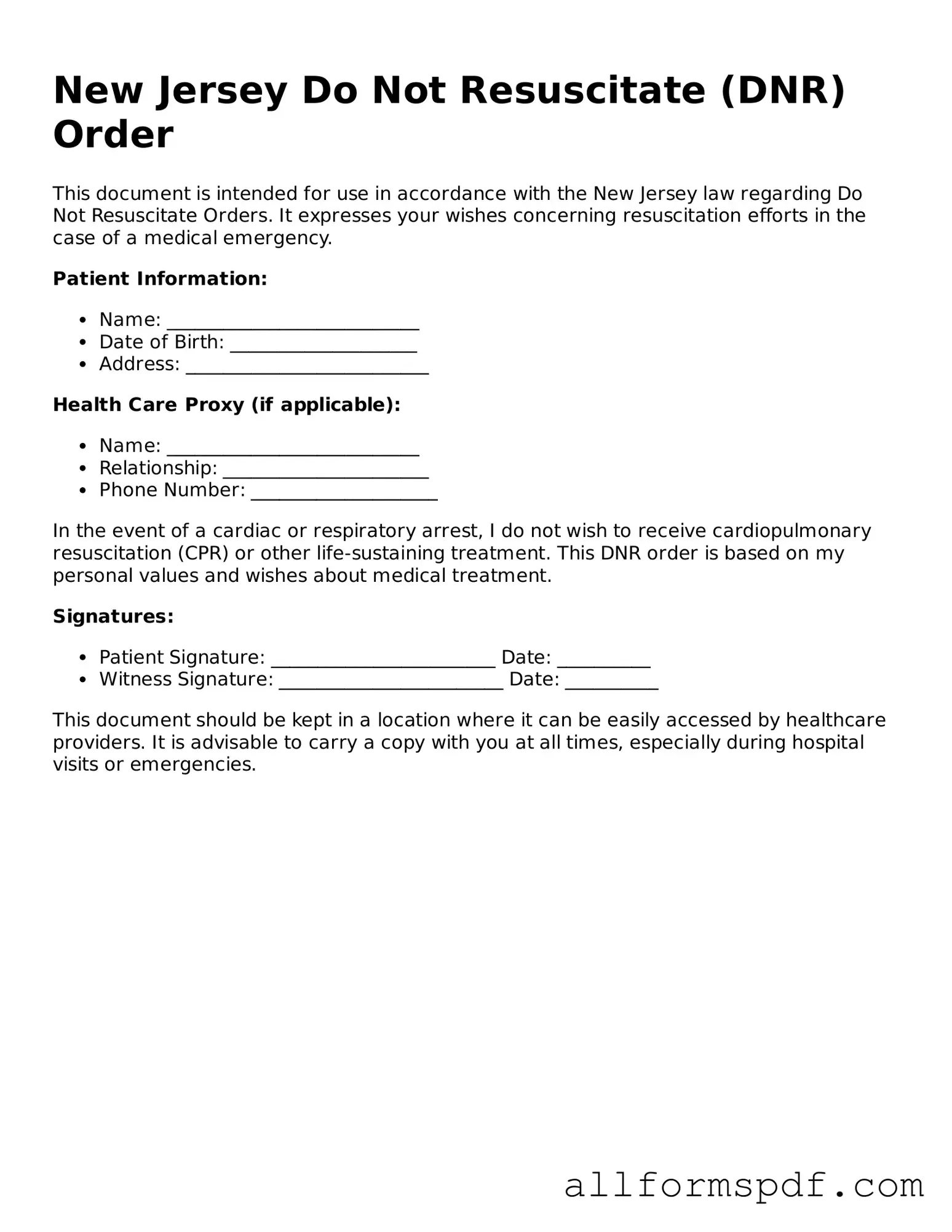When completing the New Jersey Do Not Resuscitate Order form, individuals often make several common mistakes. One frequent error is failing to provide all required personal information. This includes the patient's name, date of birth, and other identifying details. Incomplete information can lead to confusion and may result in the form being deemed invalid.
Another mistake is not having the form signed by the appropriate parties. The form must be signed by the patient or their authorized representative, as well as a physician. Without these signatures, the order may not be honored in a medical emergency.
People sometimes neglect to discuss their wishes with family members or healthcare providers before filling out the form. Open communication is crucial. Without these discussions, loved ones may be unaware of the patient’s preferences, leading to potential conflicts during critical moments.
Additionally, individuals may overlook the need for periodic updates to the form. As health conditions change, so too might a person's wishes regarding resuscitation. Regularly reviewing and updating the form ensures that it accurately reflects current desires.
Another common oversight is misunderstanding the implications of the Do Not Resuscitate Order. Some may believe that it means no medical care will be provided at all. In reality, it only pertains to resuscitation efforts and does not affect other forms of medical treatment.
People may also fail to keep copies of the completed form in accessible locations. It is important to have copies readily available for healthcare providers, family members, and emergency personnel. Without easy access, the form may not be honored when needed.
In some cases, individuals do not understand the specific language used in the form. Misinterpretation can lead to incorrect completion. Seeking assistance from a healthcare provider or legal professional can help clarify any confusing terms.
Lastly, individuals sometimes forget to check state regulations regarding the Do Not Resuscitate Order. Each state has its own laws and requirements. Being informed about these regulations can prevent errors and ensure that the form is legally valid.
